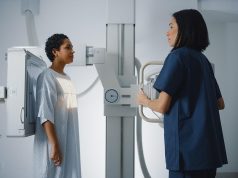Nearly one in 16 U.S. counties are hot spots, with the majority in the South
MONDAY, Dec. 7, 2020 (HealthDay News) — Specific geographic areas in the United States are associated with higher rates of mortality from early-onset colorectal cancer (CRC) in women, according to a study published in the December issue of Clinical and Translational Gastroenterology.
Andreana N. Holowatyj, Ph.D., from the Vanderbilt University Medical Center in Nashville, Tennessee, and colleagues used data from the Surveillance, Epidemiology, and End Results program to identify women (aged 15 to 49 years) diagnosed with CRC. Geospatial autocorrelation was used to identify geographic hot spots of high rates of early-onset CRC mortality among women. Patterns of community health behaviors by hot-spot location were assessed.
The researchers found that one of every 16 contiguous U.S. counties was identified as a hot spot (191 of 3,108), with 52.9 percent of hot-spot counties (101 counties) located in the South. Among the 28,790 women identified with early-onset CRC, 13.7 percent of cases (3,954 cases) resided in hot-spot counties. There was a modest correlation noted between physical inactivity and fertility with hot-spot residence among women with early-onset CRC (Ï = 0.21 and Ï = −0.23, respectively; P < 0.01). Individual- and community-level features accounted for distinct variance patterns in early-onset CRC survival among women (hot-spot counties: 33.8 percent; non-hot-spot counties: 34.1 percent).
“Understanding the impact of community health behaviors — particularly in regions with high early-onset CRC mortality rates — is critical for tailoring strategies to reduce early-onset CRC disparities,” the authors write.
Copyright © 2020 HealthDay. All rights reserved.








